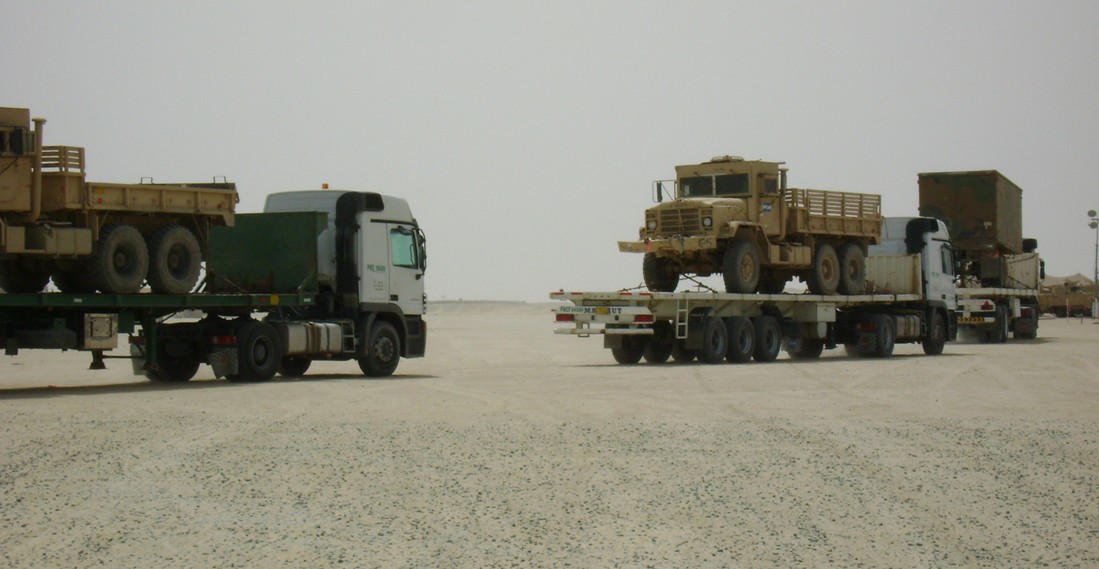CAMP ARIFJAN, Kuwait -- Members of the 2nd Battalion, 401st Army Field Support Brigade and its service provider, ITT, are diligently preparing for the unprecedented Responsible Drawdown from Iraq.
Not since World War II has the U.S. Army planned a drawdown of this magnitude. In summer 2009, the unit first received the warning order to begin preparations for the mission. Unit leadership, working in concert with ITT personnel, initiated an operational analysis to ensure adequate resources were on hand to meet the mission requirements.
After careful consideration and thorough preparation, unit and ITT personnel developed a plan which was forwarded to the Army Sustainment Command's Field Support and Contracting departments at Rock Island Arsenal, Ill. These departments provide the financial resources needed to carry out the process.
By examining the entire process, coined Retrograde, one can quickly see the enormity of the mission and gain an appreciation for the responsibility placed upon the 2/401st AFSB. The unit member given the task to execute this mission is Capt. Dale Spisak. Spisak and his staff of 12 have utilized Lean Six Sigma principles and conducted rehearsals to ensure the process will be efficient and effective.
According to Spisak, his office has developed a streamlined course of action that can quickly move both tracked and wheeled vehicles through the retrograde process.
Making the retrograde operation even more notable are the many additional missions the unit must execute simultaneously, including the moving materiel to Afghanistan while reconstituting the Army Prepositioned Stocks - 5 set. Both are very complex and resource-intensive missions.
To properly visualize the complexity of the retrograde process, one could compare it to the assembly of an automobile. How a car on an assembly line moves from station to station during its assembly is similar to how a M1A2 Abrams tank or M1151 Humvrr moves through the retrograde process. In the retrograde process, each station provides its own part(s), which, when combined with the other stations, ensures a vehicle completes the process.
For example, upon receiving a vehicle, Spisak and his team initiate what they termed the "Four Corners Process." This process strips a vehicle of any auxiliary weapon system(s) and other enablers, ammunition, "hillbilly" armor, trash and anything else the crew left behind.
Once the "Four Corners Process" is complete, Spisak's team forwards the vehicle to the wash rack for a thorough cleaning known as the Agriculture Cleaning Process. For tracked vehicles, the engine must be removed before cleaning, then reinstalled. Once cleaning is complete, the vehicle must then pass strict U.S. Agriculture Department standards before being readied for movement to the seaport of debarkation and subsequent shipment to the U.S. depots for refurbishment.
The amount of rolling stock that must pass through retrograde process is staggering. Security considerations prohibit disclosing the exact figure. However, imagine placing vehicles end-to-end in a line extending from the East Coast to just west of the Mississippi River. That visual picture should provide some perspective to the incredible number of vehicles the unit must move through the retrograde process.


Social Sharing